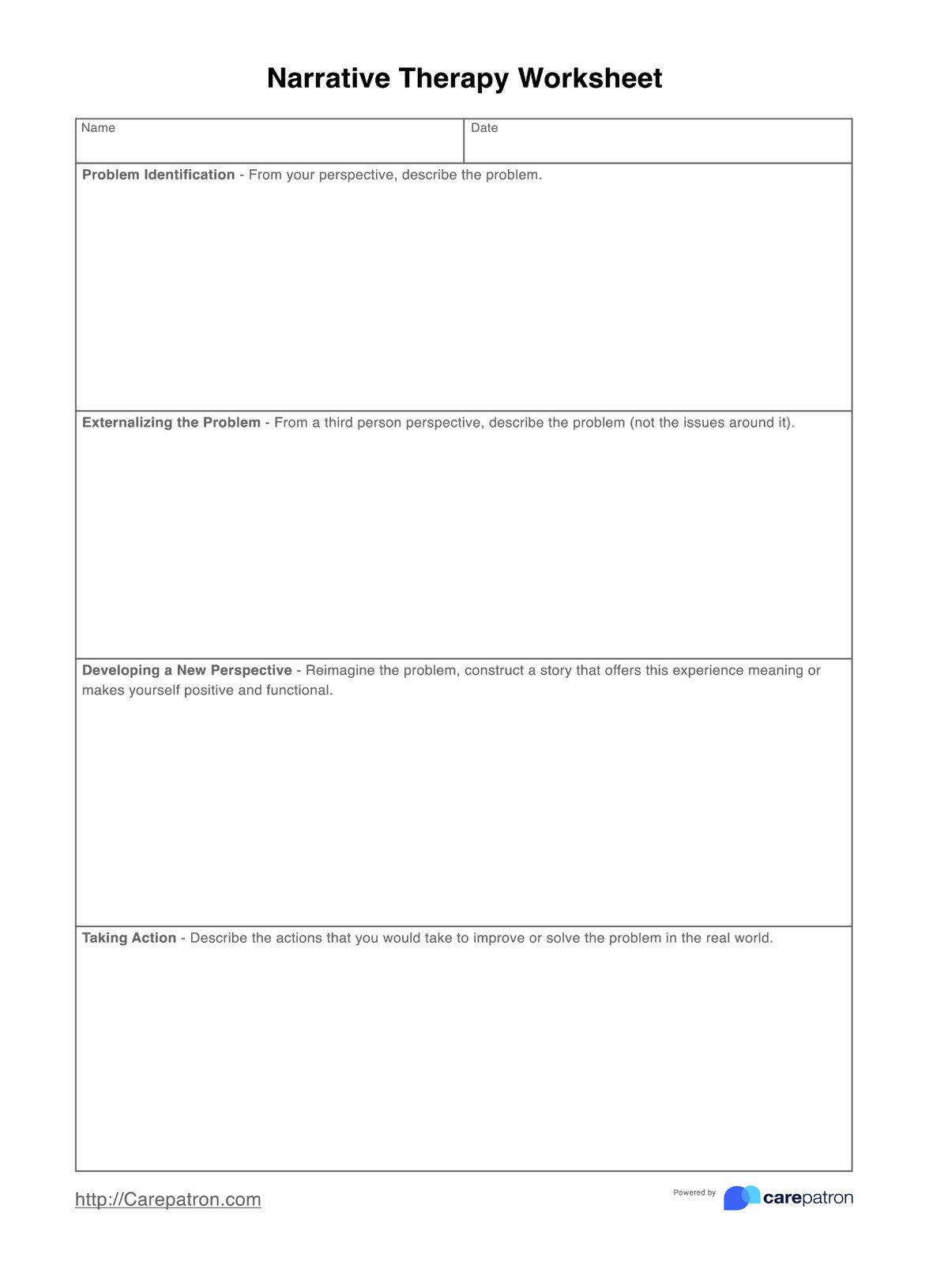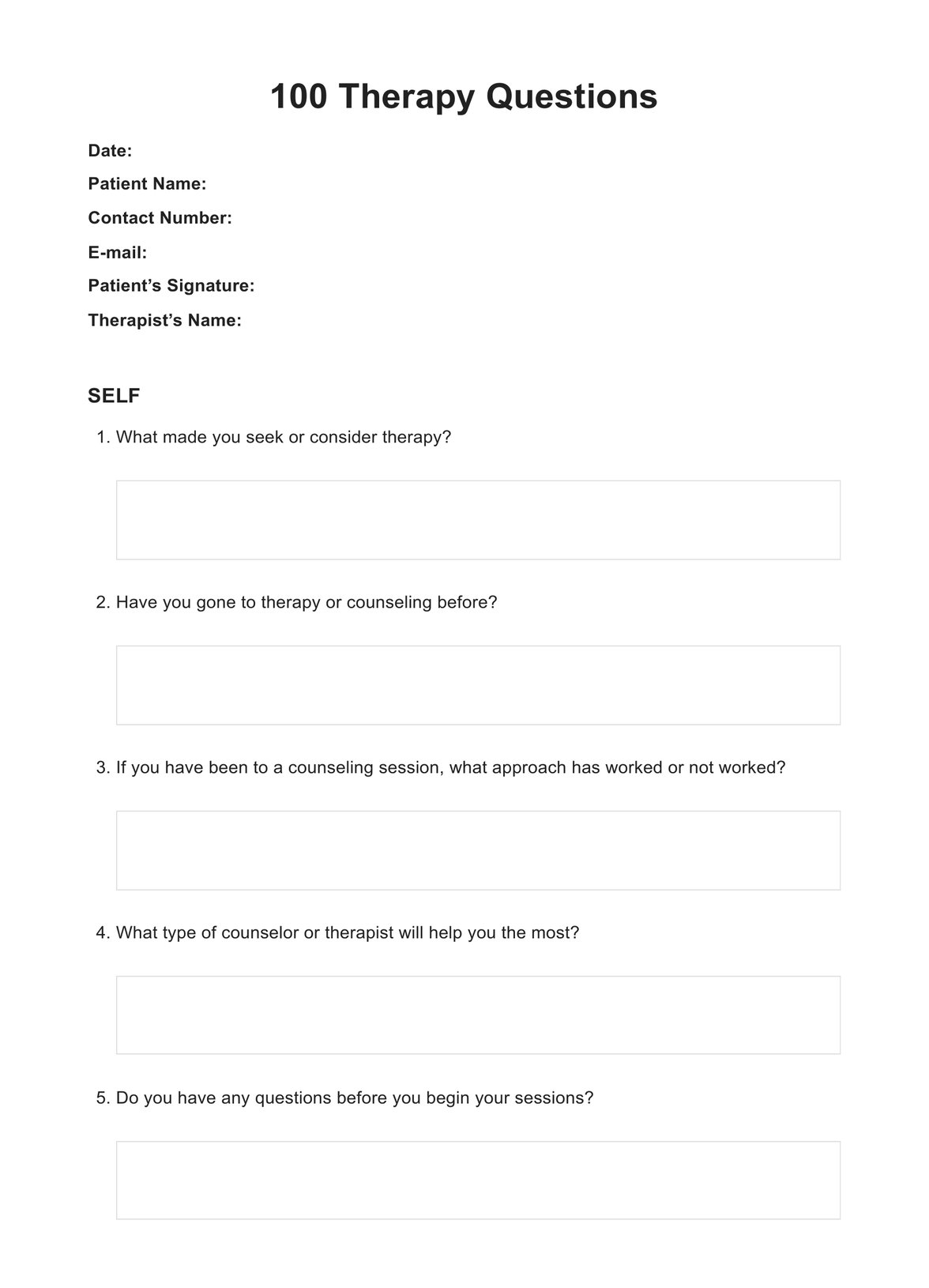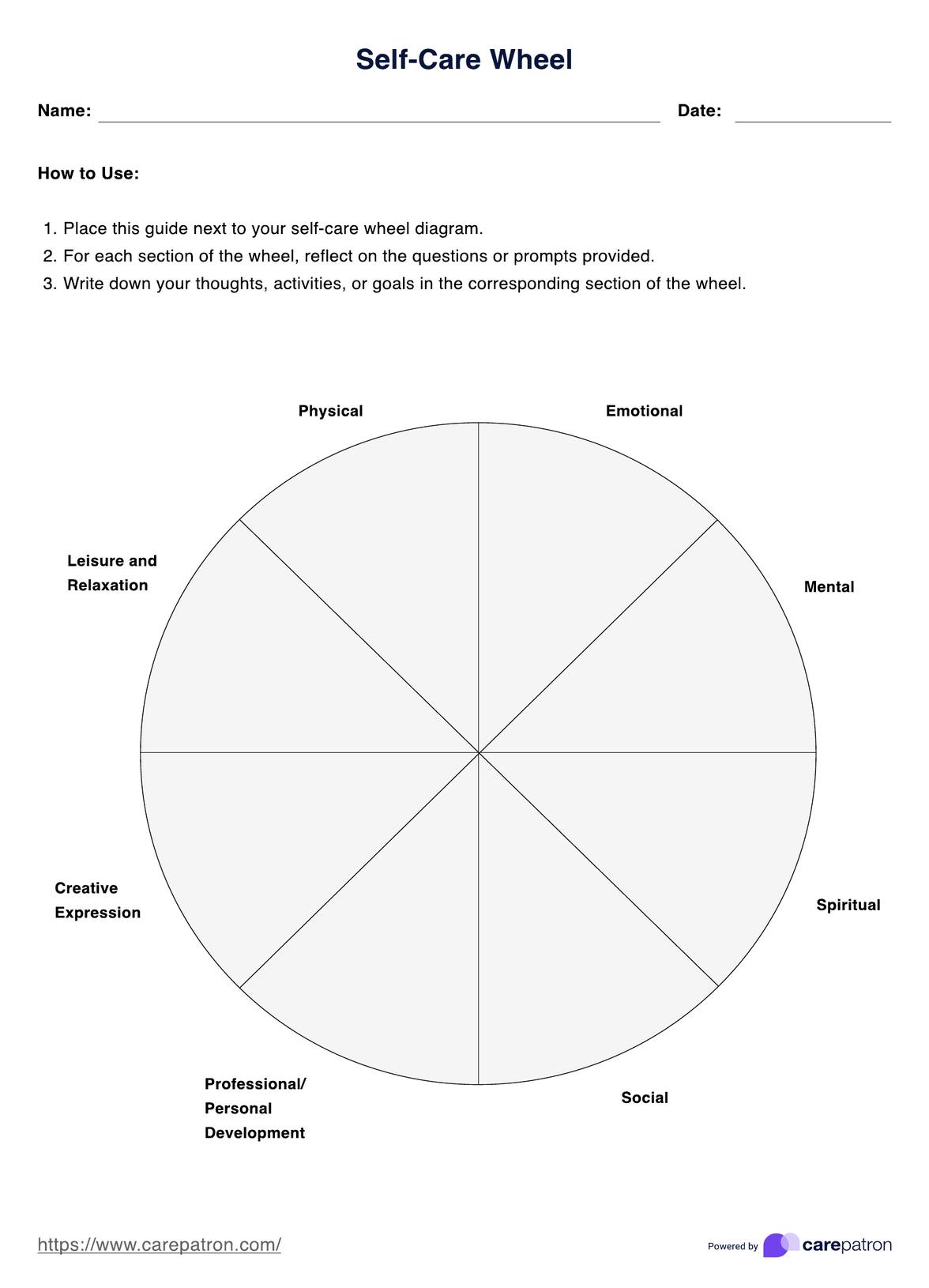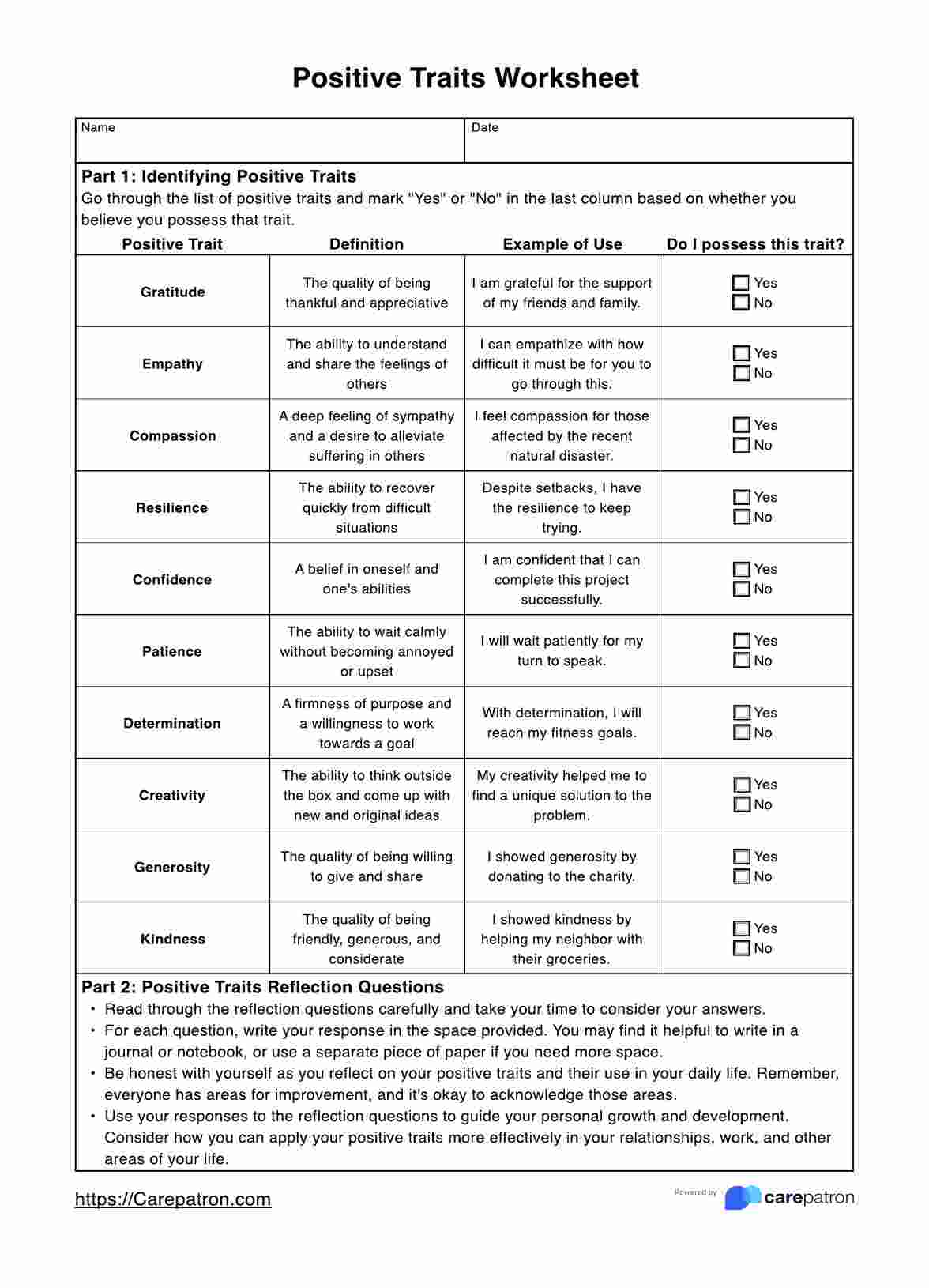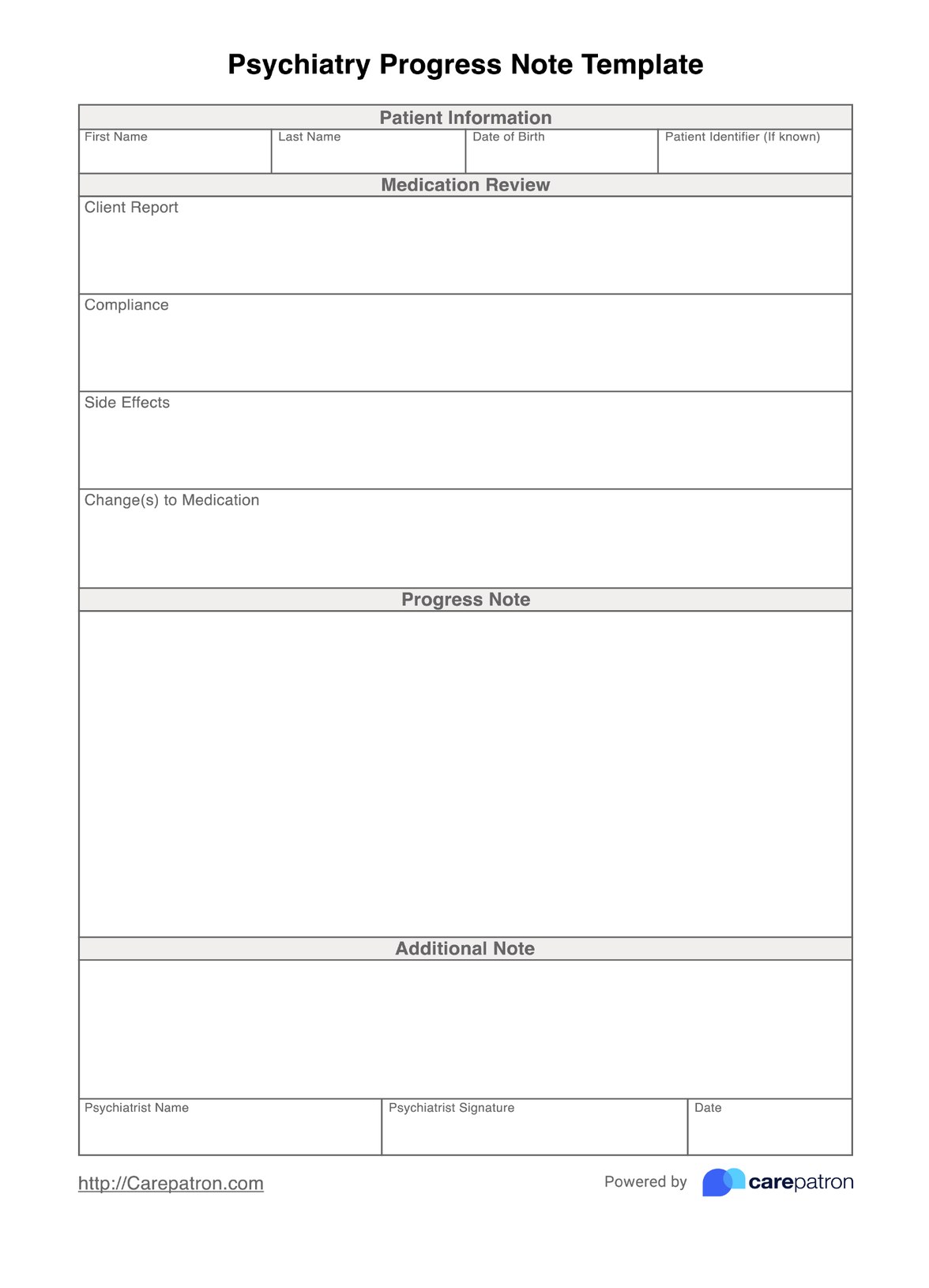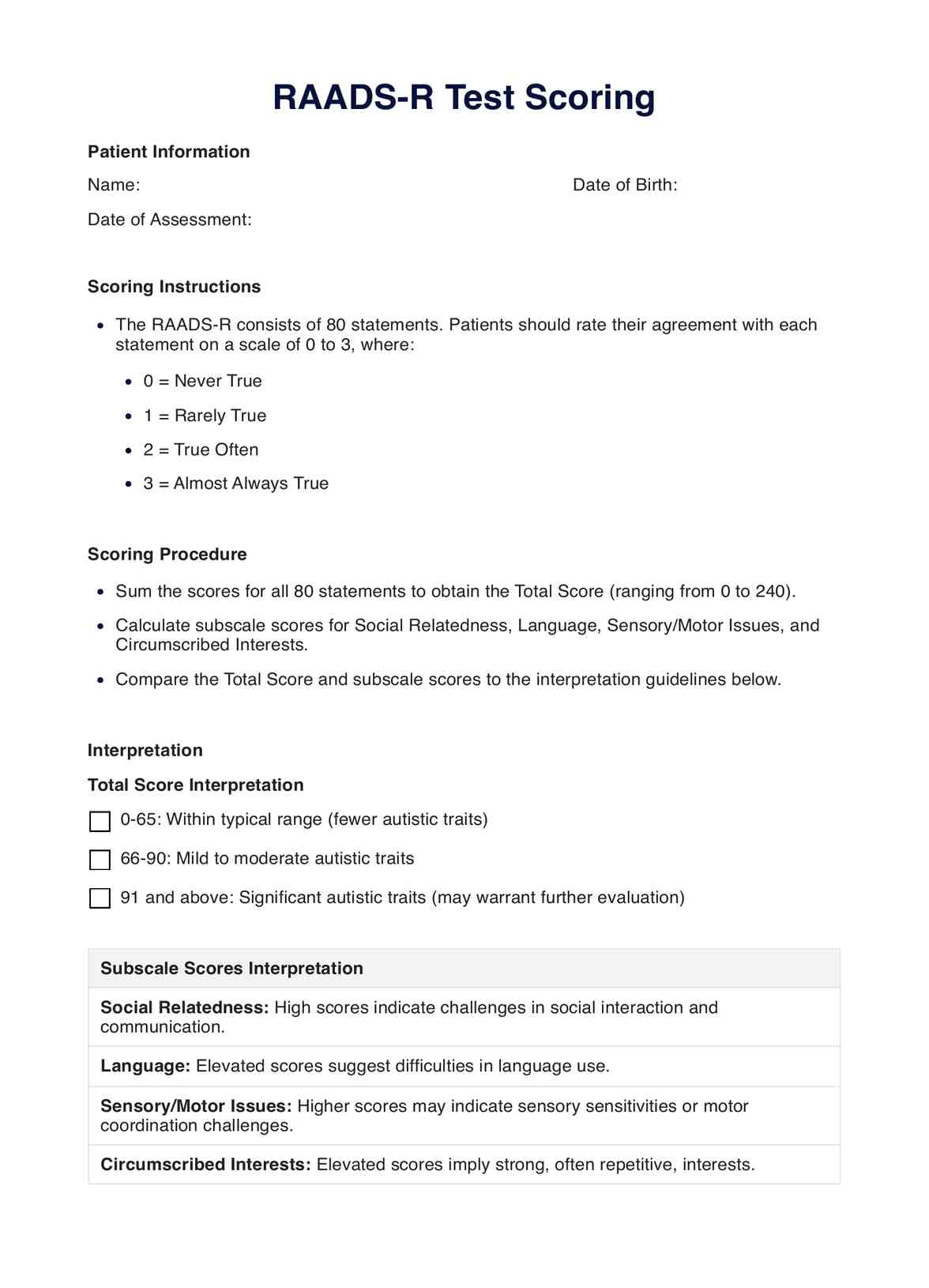Thematic Apperception Test
Explore the subconscious mind with Thematic Apperception Tests (TAT) - an insightful psychological tool revealing hidden thoughts & emotions.


What is a Thematic Apperception Test (TAT)?
The Thematic Apperception Test (TAT) is a widely researched and well-established picture interpretation technique used in the field of psychology and psychiatry for personality assessment. Developed by Henry A. Murray and Christiana D. Morgan in the 1930s, the TAT aims to reveal aspects of an individual's personality by analyzing their responses to ambiguous scenes in picture cards.
In the TAT, individuals are presented with pictures depicting scenes without a clear narrative. The subjects are then instructed to create a story about each picture, weaving as dramatic a story as possible. The test relies on the notion that individuals will project their underlying dynamics, emotions, and conflicts relevant to their lives onto the ambiguous stimuli. This projective test explores emotional conflicts and unconscious aspects of an individual's personality.
Analyzing TAT stories involves a formal scoring system that assesses the content, themes, and emotional tone of the narratives created by the participants. Several formal scoring systems are used to evaluate TAT responses, and these systems help systematically evaluate the psychological content of the stories generated.
The TAT is often employed in routine psychological evaluations and has been utilized in various contexts, including assessing crime suspects and evaluating emotionally disturbed individuals. The same scoring system can be applied across diverse populations, ensuring consistency in the analysis of responses.
One key advantage of the TAT is its ability to uncover information about an individual's emotional investment in different situations. By examining the themes and emotions expressed in the TAT stories, psychologists gain insights into the subject's thought processes, defense mechanisms, and overall psychological functioning.
While the TAT has its strengths, it is essential to note that, like any psychological assessment tool, it should be used judiciously and in conjunction with other evaluation methods. Furthermore, interpreting TAT data requires expertise in understanding the complex interplay of factors influencing the stories created by individuals.
The Thematic Apperception Test remains a valuable tool in personality tests and psychiatric assessments, offering a unique perspective on the inner workings of an individual's mind through the analysis of as dramatic a story as they can construct from ambiguous TAT pictures.
Thematic Apperception Test Template
Thematic Apperception Test Example
How does it work?
Healthcare professionals employ the Printable Thematic Apperception Test (TAT) as a potent tool to delve into the subconscious minds of their clients, gaining valuable insights into their thoughts and emotions. The process unfolds through several carefully orchestrated steps:
Introduction
The healthcare professional introduces the TAT to the client, emphasizing its purpose and assuring them that there are no right or wrong answers. This introduction sets the stage for a non-judgmental exploration of the client's inner world. Clients are informed that the test entails creating narratives based on a series of carefully selected pictures.
Picture presentation
A crucial element of the TAT involves presenting the client with a series of pictures, typically comprising 10 distinct images. Each image is chosen deliberately to evoke a range of emotions and scenarios. This picture presentation sets the foundation for the subsequent storytelling process.
Story creation
Clients are encouraged to unleash their creativity and construct a story for each presented picture. The narrative should delve into what is happening, the events leading to the situation, and the potential feelings of the characters involved. This step allows for a free flow of imagination, providing a unique window into the client's thoughts.
Non-intrusive exploration
The storytelling aspect of the TAT ensures a non-intrusive exploration of the client's inner world. As they weave their narratives, subconscious beliefs, fears, and desires are subtly expressed through the characters and events in the story. This method allows for a nuanced understanding without direct probing.
Themes and patterns
Healthcare professionals systematically analyze the client's stories, identifying recurring themes, characters, and emotions. These observed patterns offer valuable insights into the client's psychological landscape, contributing to a comprehensive assessment.
Unconscious expression
By bypassing conscious censorship, the TAT provides a unique avenue for clients to express thoughts and emotions they may not be consciously aware of or willing to share openly. The test becomes a powerful tool for unveiling aspects of the client's true self.
Tailored treatment
The information gleaned from the TAT becomes a cornerstone for healthcare professionals to understand their clients more deeply. This understanding is instrumental in developing personalized and effective treatment plans that address the client's emotional and psychological needs.
Ethical considerations
Healthcare professionals must handle clients' responses with sensitivity and uphold confidentiality throughout the process. Establishing trust is paramount in creating a safe environment for clients to express themselves, ensuring the ethical practice of utilizing the TAT as a valuable psychological assessment tool.
Scoring
Analyzing TAT stories systematically
After the TAT session, the administrator systematically analyzes the stories created by the individual. This involves identifying recurring themes, characters, and emotions across the narratives.
Formal scoring system:
The TAT employs a formal scoring system, which may vary depending on the chosen scoring method. Several formal scoring systems were developed for TAT, each focusing on different aspects of the stories, such as content, themes, and emotional tone.
Personality assessment:
The ultimate goal of scoring is to provide a comprehensive personality assessment. The administrator evaluates the individual's emotional conflicts, underlying dynamics, and response patterns to the ambiguous stimuli presented in the TAT.
Clinical context:
The scoring is done within a clinical context, considering the individual's emotional investment and the relevance of the stories to their personal experiences. This nuanced approach ensures a thorough understanding of the individual's psychological state.
Tailored interpretation:
The data gathered from TAT responses is then used to reveal aspects of the individual's personality and explore emotional conflicts. The interpretation is tailored to the unique characteristics and experiences of the person being assessed.
The administration and scoring of the Thematic Apperception Test involve a carefully crafted process that combines the art of storytelling with a systematic analysis of the narrative
Clinical utility
The clinical value of the Thematic Apperception Test (TAT) extends beyond a mere examination of surface-level personality traits; it delves into the intricate dynamics of an individual's inner world, especially their feelings towards others and potential life trajectories. Rooted in the presumption that individuals, particularly children, project their dreams and realities onto the characters and scenarios presented in TAT cards, the test becomes a portal to understanding the subconscious influences that shape thoughts, actions, and aspirations.
Children, in particular, are believed to engage with TAT characters in a manner that allows them to externalize their internal world onto the stories they construct. Through this projection, the TAT unveils the subtle nuances of their hopes, fears, and perceptions, providing clinicians with valuable insights into the psychological landscape of young adults. The narratives created during TAT sessions offer a unique window into the subjective experiences of individuals, shedding light on their emotional conflicts, aspirations, and even potential challenges they might face as they navigate through life.
The TAT's strength lies in its ability to capture the richness of these projections through a formal scoring system. This system, which has been the subject of extensive research in psychological assessments, allows for a systematic analysis of the content, themes, and emotional tone of the stories generated. This structured approach ensures that the data obtained from TAT responses is comprehensive and reliable, making it a robust tool for clinicians seeking a nuanced understanding of the complexities of the human mind.
As a result, the TAT remains a valuable and widely utilized instrument in clinical settings. Its capacity to reveal aspects of personality that may not be readily accessible through other means makes it an indispensable tool for mental health professionals. The method's ability to explore the intricate interplay of emotions, aspirations, and underlying influences positions it as a cornerstone in assessing psychological well-being, offering a holistic perspective that goes beyond surface-level observations and contributes significantly to the art and science of clinical psychology.
When would you use this template?
The Thematic Apperception Test (TAT) template is appropriately used in various instances for personality assessment and exploration of emotional dynamics:
Routine psychological evaluations
The TAT template is suitable for routine psychological assessments, providing a structured approach to understanding an individual's personality through analyzing as dramatic a story as they construct in response to the ambiguous TAT pictures.
Emotionally disturbed individuals
It is valuable when evaluating emotionally disturbed individuals. The TAT helps reveal aspects of emotional conflicts relevant to their psychological well-being, offering insights into their emotional investment and potential defense mechanisms.
Personnel screening and selection
The TAT can be employed to screen candidates in certain professions, especially those where understanding individuals' emotional tone and underlying dynamics is crucial. It helps in exploring aspects that may not be evident through traditional interviews.
Projective test in psychotherapy
In psychotherapy, particularly in the psychodynamic tradition, the TAT is used as a projective test to explore emotional conflicts and defense mechanisms. The stories involved in response to the TAT cards provide a window into the client's inner world.
Comparative studies
The TAT template is utilized in outcome studies and comparative research to examine the effectiveness of different therapeutic approaches or interventions. It offers a means to analyze changes in TAT responses over time.
Academic research
Researchers may use the TAT template for academic purposes, studying various personality-related topics, emotional conflicts, and underlying dynamics. This includes dissertations abstract international, where TAT data may be analyzed to contribute to the broader understanding of human behavior.
Cultural and Gender Studies
The TAT can be employed in studying cultural and gender differences and the influence of ambiguous gender depictions in TAT pictures. It can also be useful in examining the impact of socio-cultural factors on emotional expression.
Goal setting and affect tone
In therapeutic settings, the TAT template can be utilized for goal setting and exploring affect tone in individuals. The stories generated in response to TAT cards provide valuable information for goal-oriented psychotherapy.
The TAT template, whether the old TAT with human figures or the new TAT introduced at Harvard University, is a versatile tool applicable in diverse contexts, providing valuable tat data to reveal aspects of personality, explore emotional conflicts, and understand the underlying dynamics of individuals.
Research & evidence
The Thematic Apperception Test (TAT) has a rich history dating back to the early 20th century. American psychologist Henry A. Murray and psychoanalyst Christiana D. Morgan developed the TAT in the 1930s as a projective psychological assessment tool to explore individuals' unconscious thoughts and motivations through storytelling.
Over the years, numerous researchers have contributed to validating and refining the TAT, establishing its reliability and validity as a psychological instrument. One notable study conducted by McClelland, Koestner, and Weinberger in 1989 demonstrated the TAT's effectiveness in measuring the need for achievement, one of its widely recognized applications (McClelland, D. C., Koestner, R., & Weinberger, J., 1989).
Furthermore, research by Masling and Price (1956) and Schaffer (1952) has shown that the TAT can be used to assess various psychological traits and conditions, such as emotional states, defense mechanisms, and personality characteristics (Masling, J. M., & Price, J. S., 1956; Schaffer, C. E., 1952).
The TAT has been extensively used in clinical settings, research studies, and cross-cultural examinations. The test's interpretive and diagnostic value has been studied across diverse populations, leading to the development of culturally adapted versions for improved applicability in various societies.
Although the TAT has faced criticisms concerning its standardized administration and interpretation, researchers like Exner (2003) have worked on refining scoring systems to enhance their reliability and objectivity (Exner, J. E., 2003).
The Thematic Apperception Test's long history, coupled with the numerous research studies supporting its validity and reliability, has solidified its status as a valuable psychological tool in gaining insights into the human mind and providing a deeper understanding of individuals' thoughts, emotions, and motivations.
References
McClelland, D. C., Koestner, R., & Weinberger, J. (1989). How do self-attributed and implicit motives differ? Psychological Review, 96(4), 690-702.
Masling, J. M., & Price, J. S. (1956). A Critical Review of the Thematic Apperception Test. Psychological Bulletin, 53(2), 89-111.
Schaffer, C. E. (1952). Some determinants of defense mechanisms and personality structure. Journal of Projective Techniques, 16(4), 339-344.
Exner, J. E. (2003). The Rorschach: A Comprehensive System: Vol. 1. Basic Foundations (3rd ed.). John Wiley & Sons.
Commonly asked questions
A typical Thematic Apperception Test (TAT) session lasts about 45 to 60 minutes, allowing individuals sufficient time to create as dramatic a story as possible in response to ambiguous scenes presented in the test.
Yes, the Thematic Apperception Test (TAT) is a validated assessment tool with a long history of research and application. It demonstrates its reliability and effectiveness in providing insights into personality dynamics and emotional conflicts.
The TAT can be used in research studies. Its versatility and ability to elicit narratives that reveal underlying aspects of personality make it a valuable tool for researchers exploring a wide range of topics in psychology, psychiatry, and related fields.


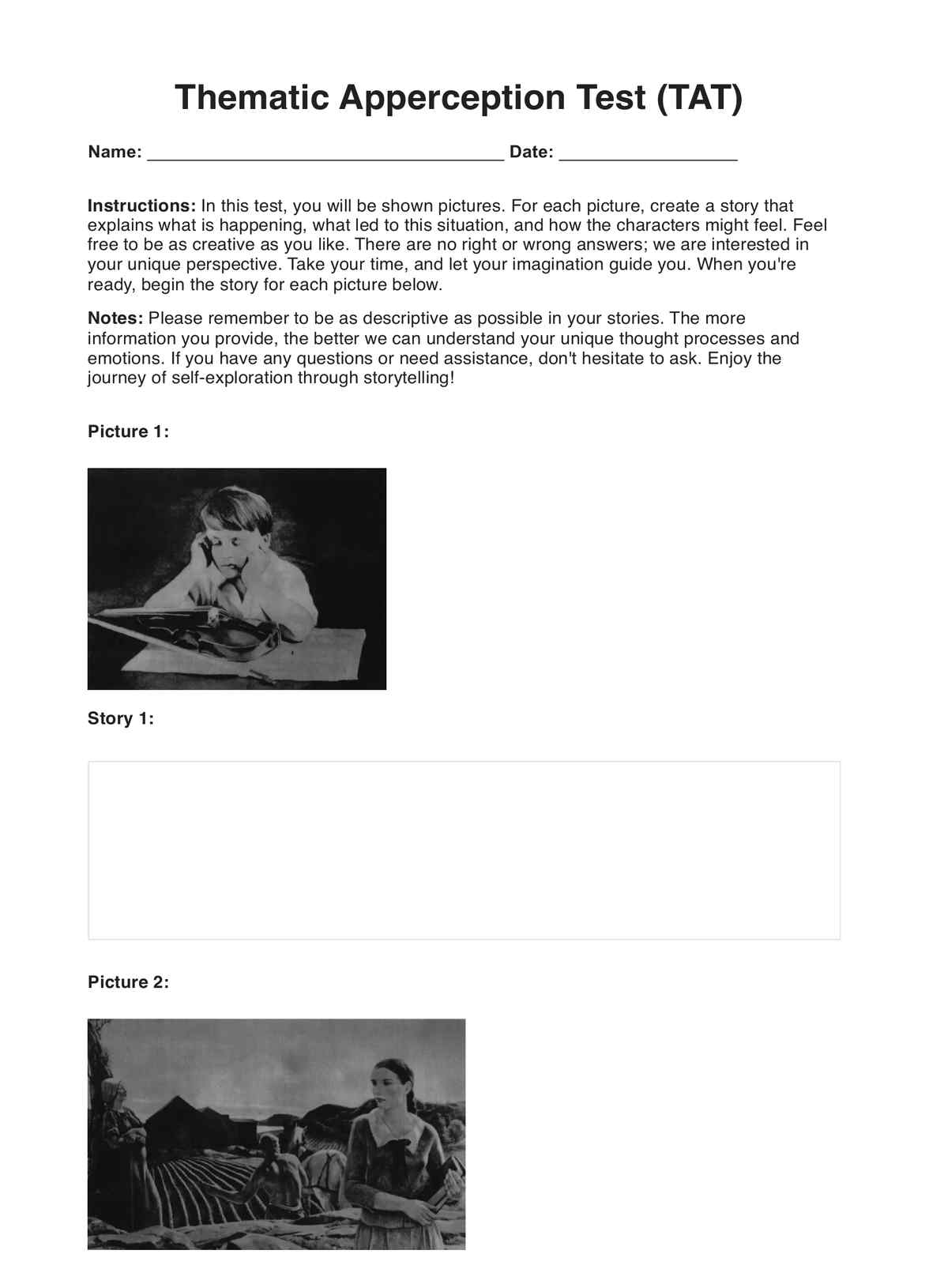
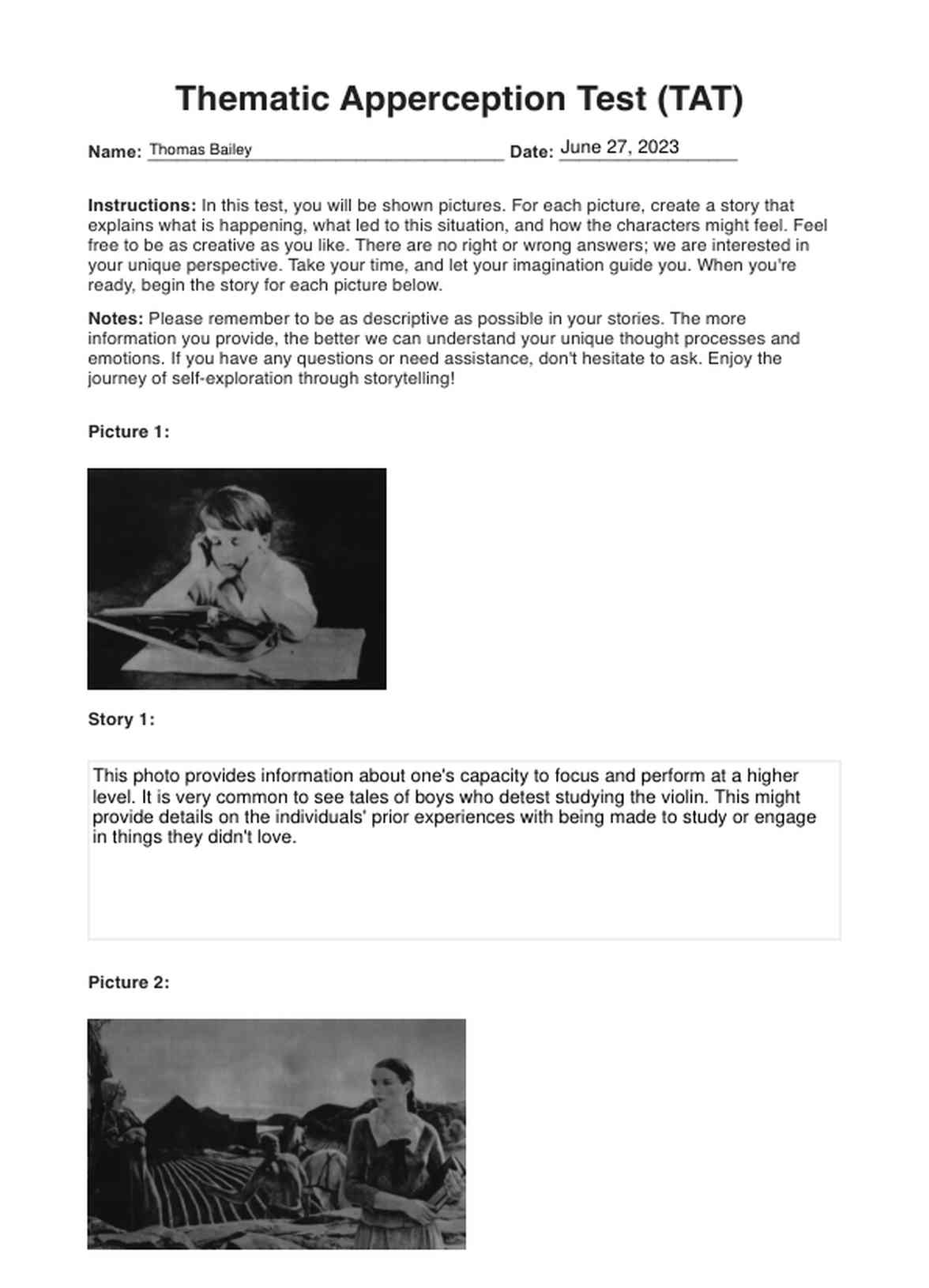













-template.jpg)























































































